They say eyes are the windows to the soul, but these animals have a stare like no other. With large eyes that’ll pull you in, you’ll find yourself mesmerized by their captivating gaze and drawn to their irresistible cuteness. Like a moth to a flame. Let’s take a look at some of these land animals with the largest eyes.
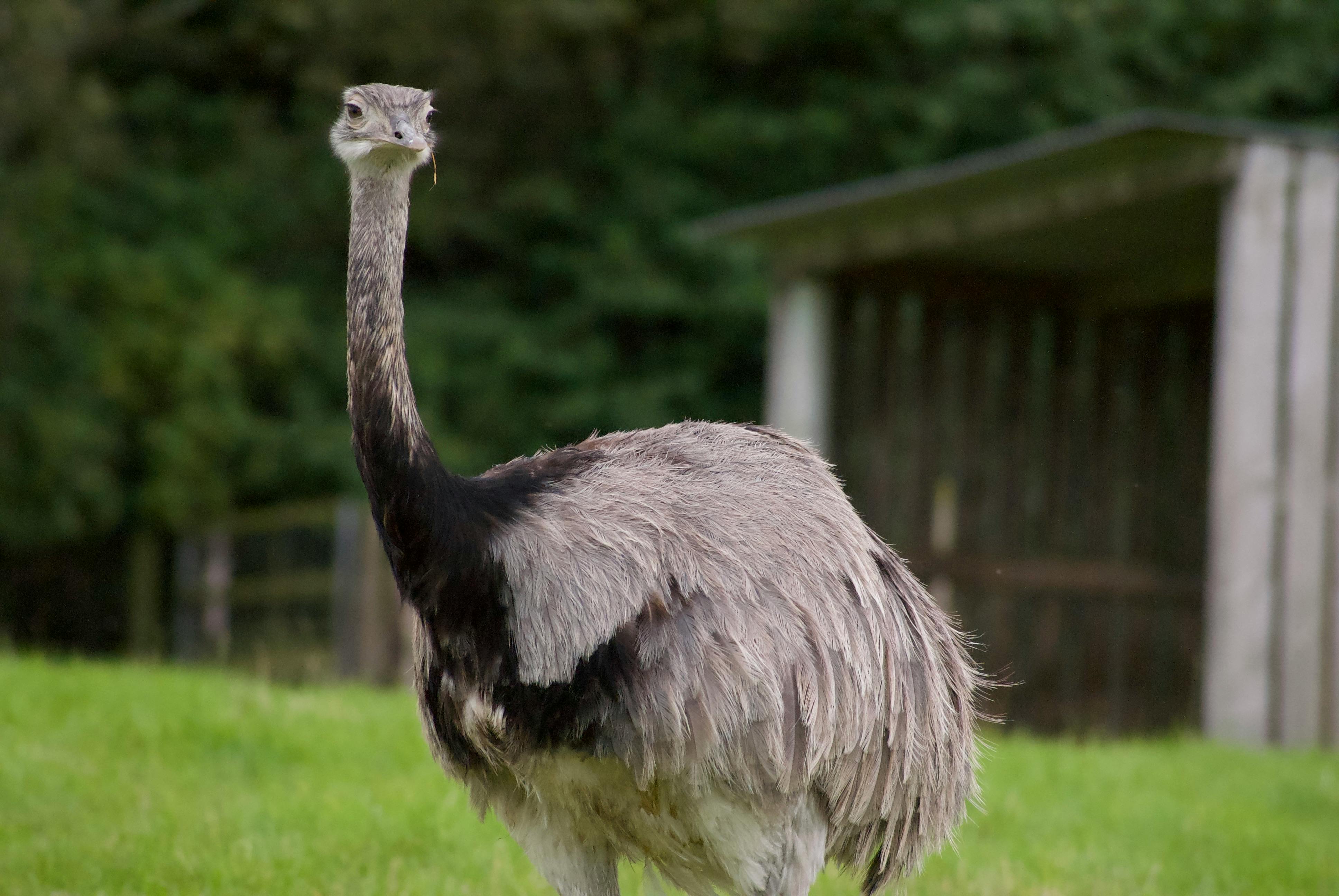
1. Ostrich
- Eye size: 50.8 mm (2 in) in diameter
- Size: 7 to 9 feet
- Weight: 220 to 350 pounds
- Speed: 30 miles (48 kilometers) an hour
- Lifespan: 30 to 40 years
- Location: Africa
You may not know this but the ostrich takes the cake for having the largest eyes of any terrestrial mammal. It even has a Guinness World Record as proof of it! Its eyes are larger than its brain – no bigger than a walnut – and twice the diameter of human eyes.
Its eyes are not just for display tho, an ostrich has extremely great eyesight that helps them spot predators from great distances, like from 3 to 4 kilometers away. I’m sure you already know but ostriches don’t fly, they have string legs built for running and self-defense. Just one kick is enough to kill a lion. The male ostrich can roar like a lion too!
Did you know that an ostrich’s cornea is a suitable replacement for human corneas? Wild, right?

2. Tarsier
- Eye size: 16 mm (0.63 in) in diameter = 1.5 cm
- Size: 25.4 cm to 33 cm (10 to 13 in)
- Weight: 4 to 5 ounces (110 to 130 grams)
- Lifespan: 10 years
- Location: Maritime Southeast Asia
This primitive little primate has the largest eye-to-body ratio of any mammal. Tarsiers are one of the most adept predators with long hind legs allowing them to leap 16 feet from one branch to another.
It’s among the ones on this list because its eyes are so large that it cannot even be rotated. Instead, it’s capable of swiveling its head for up to 180° in each direction (that’s almost 360 degrees!) to scan its environment.
Here’s a fun fact: Their eyes are bigger than their stomach and each of them is the same volume as their brain! And can you believe that their babies are born with their eyes open, ready to climb trees within just an hour of birth?
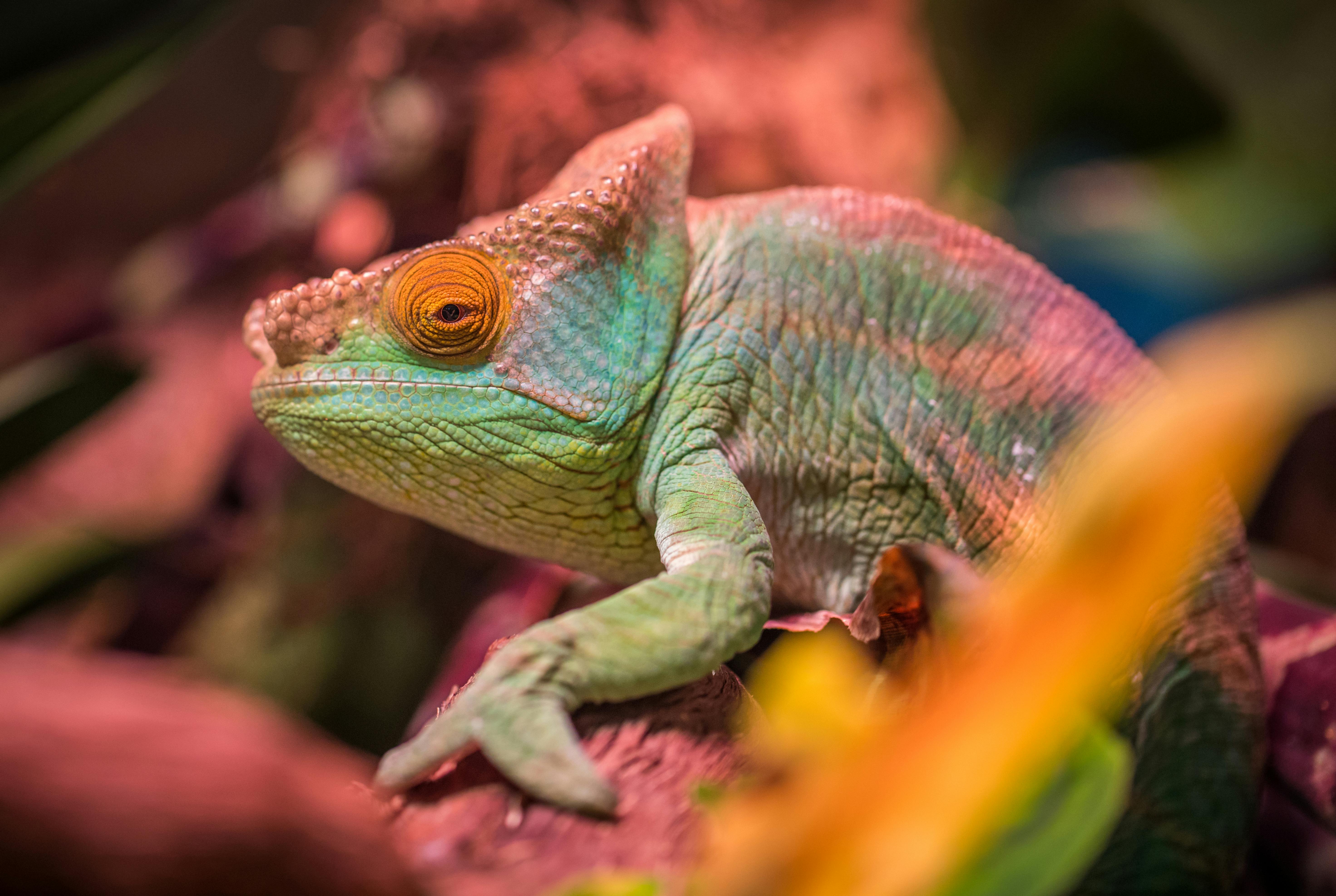
3. Chameleon
- Eye size: 18 mm (0.7 in) in diameter
- Size: 21 inches
- Weight: 14.4 ounces
- Lifespan: 12 years
- Location: Africa, Southern Europe, South Asia
Chameleons are known to be colorful critters but not only do they change color to blend in but they also do so to attract potential mates and regular body temperatures. They also make a statement, telling intruders to stay away.
The most interesting part is their eyes. In addition to their camouflage, they have protruding eyes that can both look at the same scene and use both eyes separately to better see their surroundings – giving them 360° vision without as much as moving their head.
Let’s not forget about their tongues. It stretches to 1.5 times its body length and can move around 13 miles per hour! Their prey probably won’t know what hit them – talk about fast food.
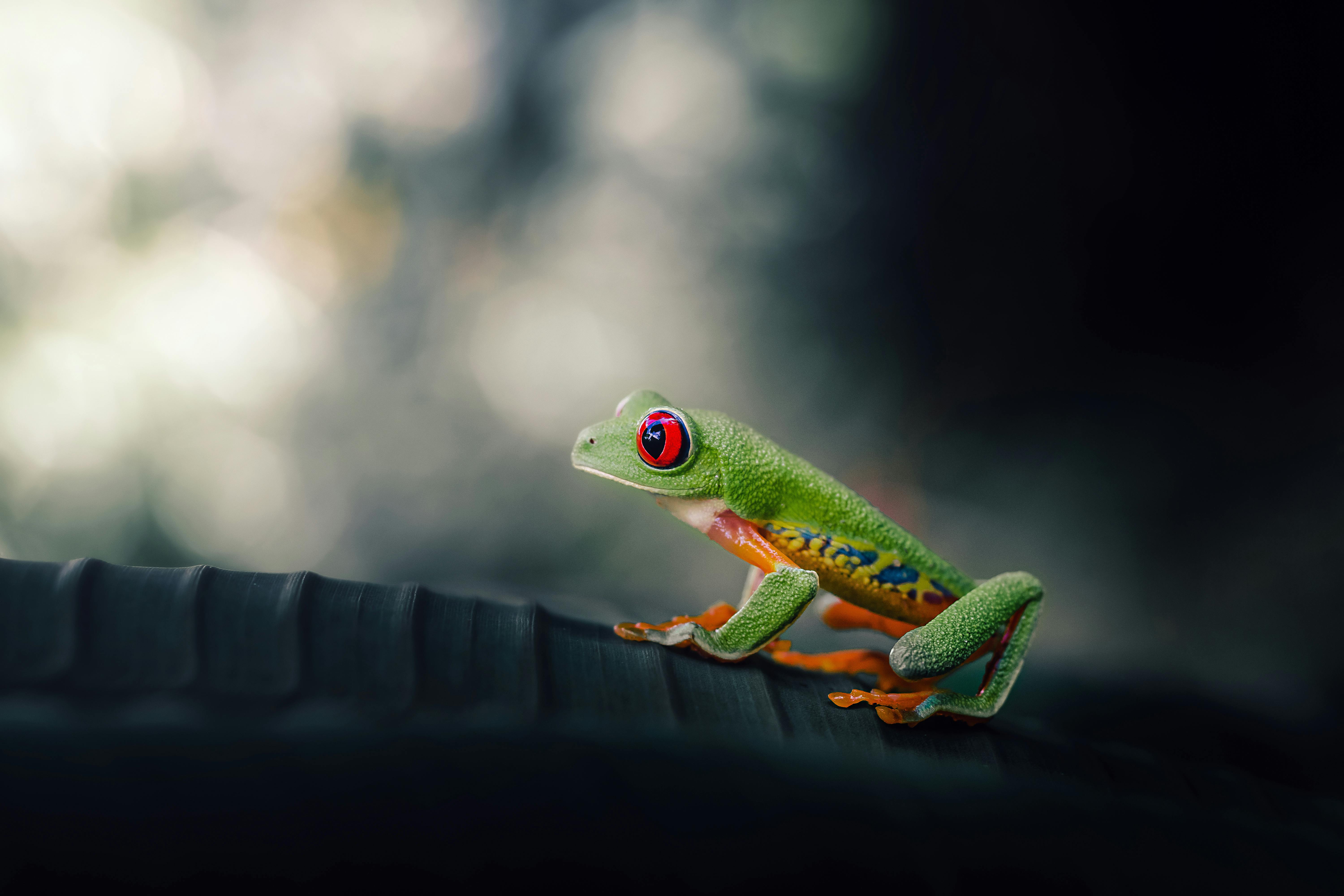
4. Red-Eyed Tree Frog
- Size: 1.5 to 2.75 inches (3.8 to 7 cm)
- Weight: 6 to 16 grams (0.2 to 0.5 oz)
- Lifespan: 5 years
- Location: Central America
At first, the red-eyed tree frog may not seem like much but upon closer inspection, this animal is hiding a splash of color. It has vertical blue and yellow stripes on its flank, orange feet, and not to mention those big red eyes they have that are true to their name.
Among all frogs, this species has the largest eyes – body proportion-wise. They’re nocturnal creatures so they’re highly dependent on their sight to survive. Additionally, they can jump 20 times their body length, making them great escape artists. They can make quick visual judgments to jump from tree to tree.
When they sleep, they close their eyes, fold in, and hide their toepads which makes great camouflage. Without their bright colors, they seem just one with the leaves, all green but if it fails, they use a very effective method called the startle coloration where they flash their large red eyes, startling predators, giving them a momentary room for escape.
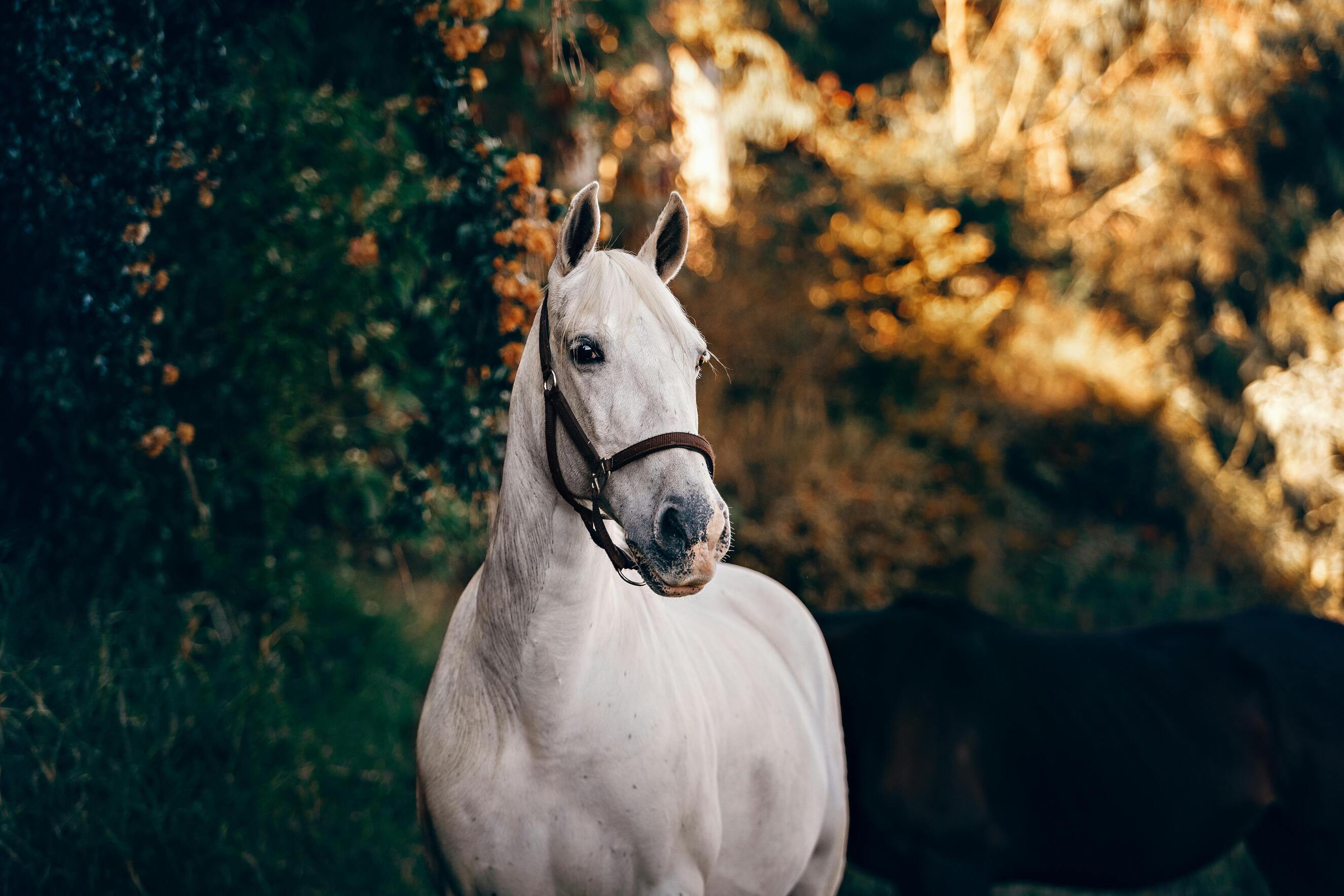
5. Horse
- Eye size: 5.8 cm (2 in) in diameter
- Height: 160 to 170 cm
- Weight: 1,102 to 1,323 pounds (500 to 600 kg)
- Lifespan: 25 to 30 years
- Location: All continents except Antarctica
Horses are incredible creatures, no matter what breed. They’re strong and majestic beings with eyes bigger than an elephant’s and nearly 8 times larger than humans!
Their eyes are positioned on the sides which gives them almost 360° vision. They even see everything about 50% larger than we do! Although, they have two blind spots: directly in front and behind their head so you better think twice about approaching them from behind unless you wanna risk a swift kick.
Here’s an interesting fact: were you aware that horses can sleep standing up? Apparently, they have a stay apparatus – a series of tendons, muscles, and ligaments locking their limbs in place so they can remain standing with virtually no muscular effort at all!
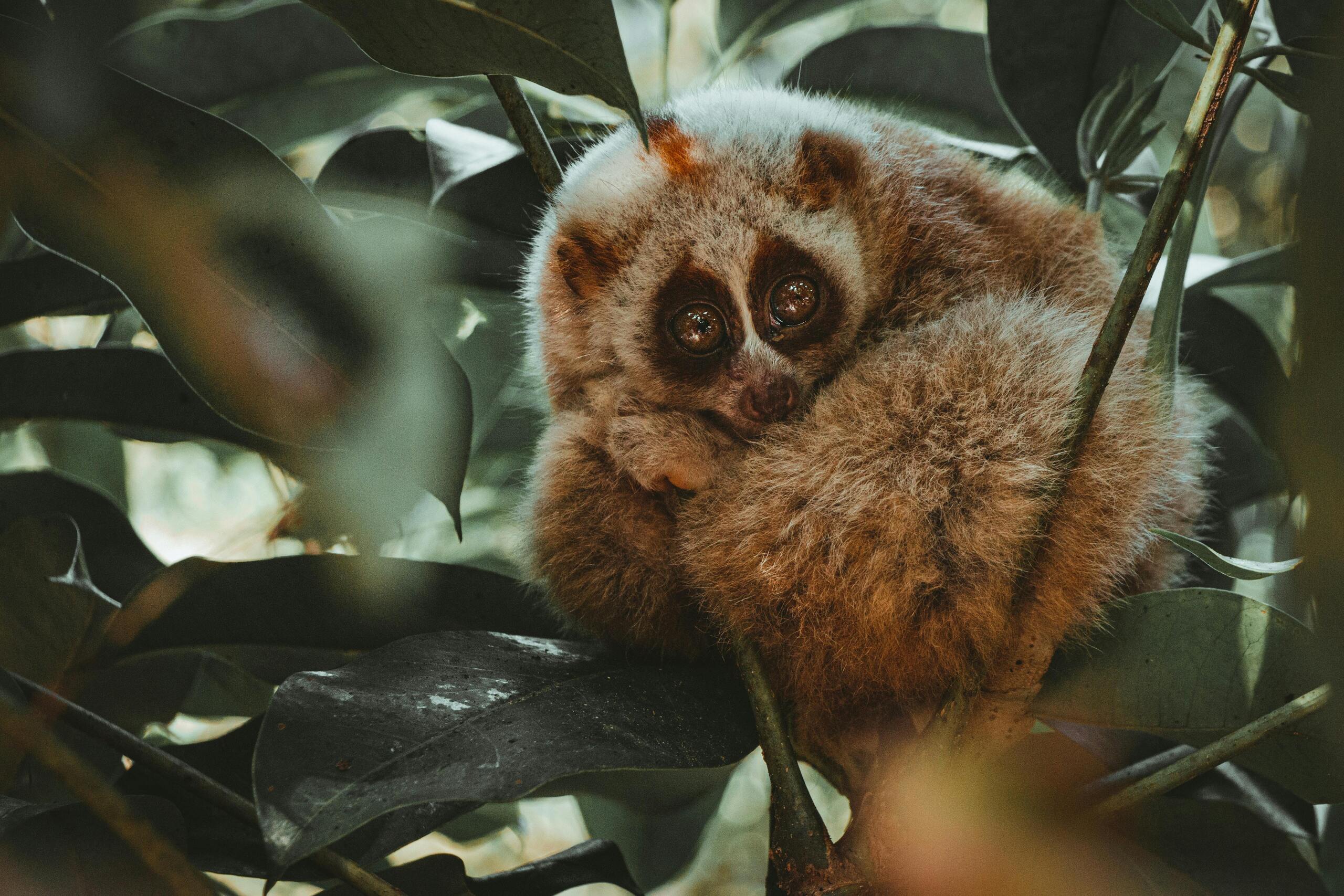
6. Slow Loris
- Eye size: 14.9 mm (1.49 cm) in diameter
- Size: 18 to 38 cm (7.1 to 15 inches)
- Weight: 9 to 11 ounces (265 to 300 grams)
- Lifespan: 20 years
- Location: Southeast Asia and nearby regions
When day turns to night, this is where their big eyes come into play. These nocturnal creatures have huge eyes and their pupils can enlarge extremely wide. With tapetum lucidum behind their retinas – a thin layer of tissue that reflects light – like other animals, they too exhibit eyeshine providing them vision even if it’s almost completely dark.
They may seem cute but they possess flesh-rotting venom earning its place as one of the world’s venomous primates! Unfortunately, some of its species are critically endangered. Read more about it in The New York Times.
The eyes of these land animals are not just for show that’s meant to lure us with their cuteness or to awe us with their anatomy. Their eyes have evolved to be specialized organs to increase their chances of survival in the wild. It grants them superpowers like supervision and night vision. Every one of these land animals relies on their large eyes to thrive every day in their environment, the fact that it made them uber-adorable (some of them, at least) is just a bonus.
Frequently Asked Questions (FAQ)
What animal has the best vision?
Ever heard of the phrase eagle eye? Yep. When it comes to having the best vision, the eagle – especially the bald eagle – holds the crown.
They see up to a mile away, that’s 1.6 kilometers! That’s because images are projected at the back of their retinas. This area is covered with cells that are sensitive to light known as cones. Meaning, the more cones you have, the sharper your eyesight. Humans have 200,000 cones per square millimeter but in the eagles’ case, they have twice more than that, making their eyesight the sharpest among any vertebrate.
What animal has 360-degree vision?
Plenty of animals have great eyesight but none of them have a perfect 360-degree vision. However, there are those that can see up to almost 360° like the big-eyed tarsier or the magnificent horse. But among them, the chameleon steals the show! As you know, they have a rather unique visual system – a panoramic vision – that allows them to scan their environment way better than other animals. They can transition from binocular to monocular vision meaning, their eyes can be moved independently from each other, giving them the optimum chance for survival.
What animal has no eyes?
You may be surprised to know that several animals are born without the magic of sight. Instead, they use their other senses to survive the wild. The star-nosed mole for instance spends most of its time underground and uses the highly sensitive tendrils of its nose to sense the surroundings. Another great example would be how sea urchins respond to light despite not having eyes. The light-sensitive tissues of their skin connected with nerve endings create a visual system instead, making them change color depending on incident light – a good enough replacement for the eyes they lack if you ask me.
What animal has the smallest eyes?
Have you heard of the threadsnake? A burrowing snake reaching lengths of only a few inches. Given their small size, they have eyes so small that you can hardly see them. They spend almost their entire lifespan underground so their eyes aren’t truly functional. They’re sometimes even referred to as blind snakes, much like the blind worm snake.
What animal has the weakest eyesight?
Moles live beneath the surface so they don’t actually have good eyesight, rather, the contrary. Although not blind, their tiny eyes are mostly covered by their fur making it barely visible. They live in a world cloaked with darkness where everything is blurry. As compensation, they have keen hearing and sense of touch, allowing them to detect vibrations to avoid potential predators and find prey.

